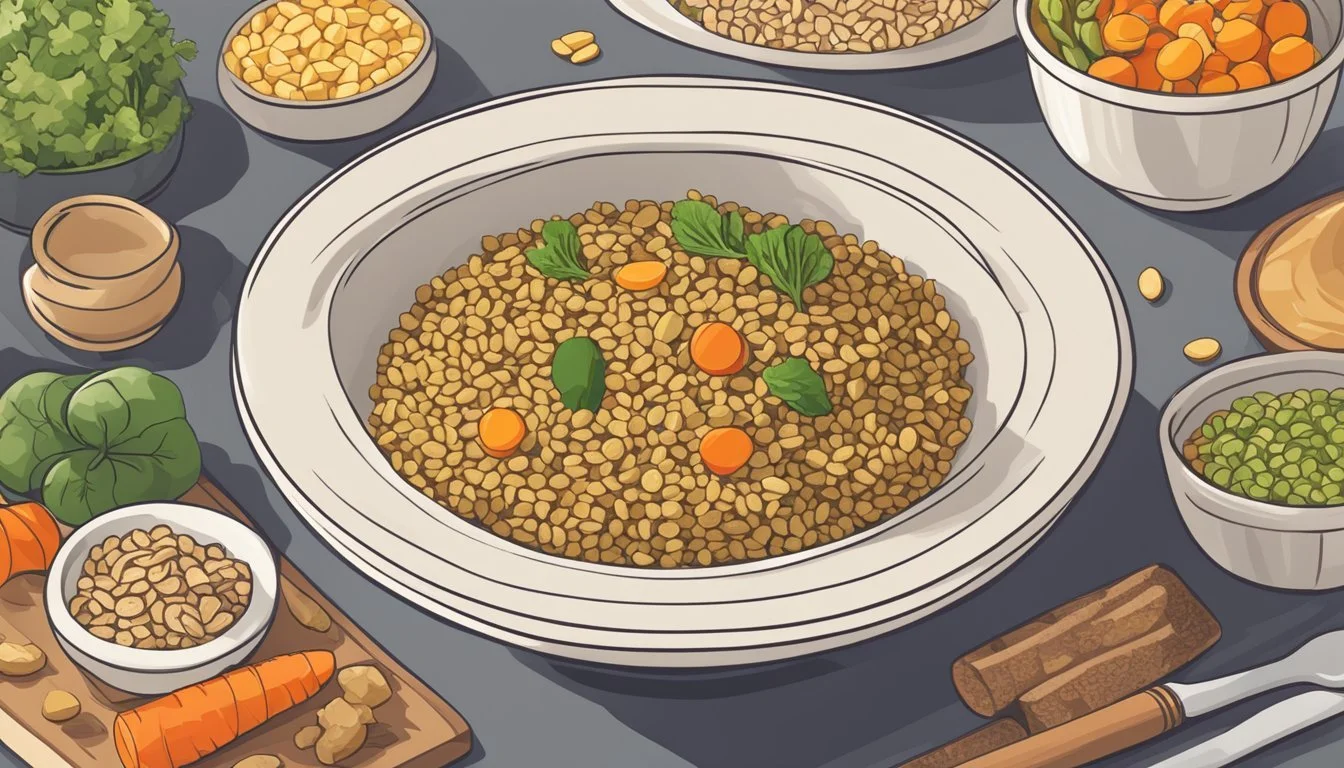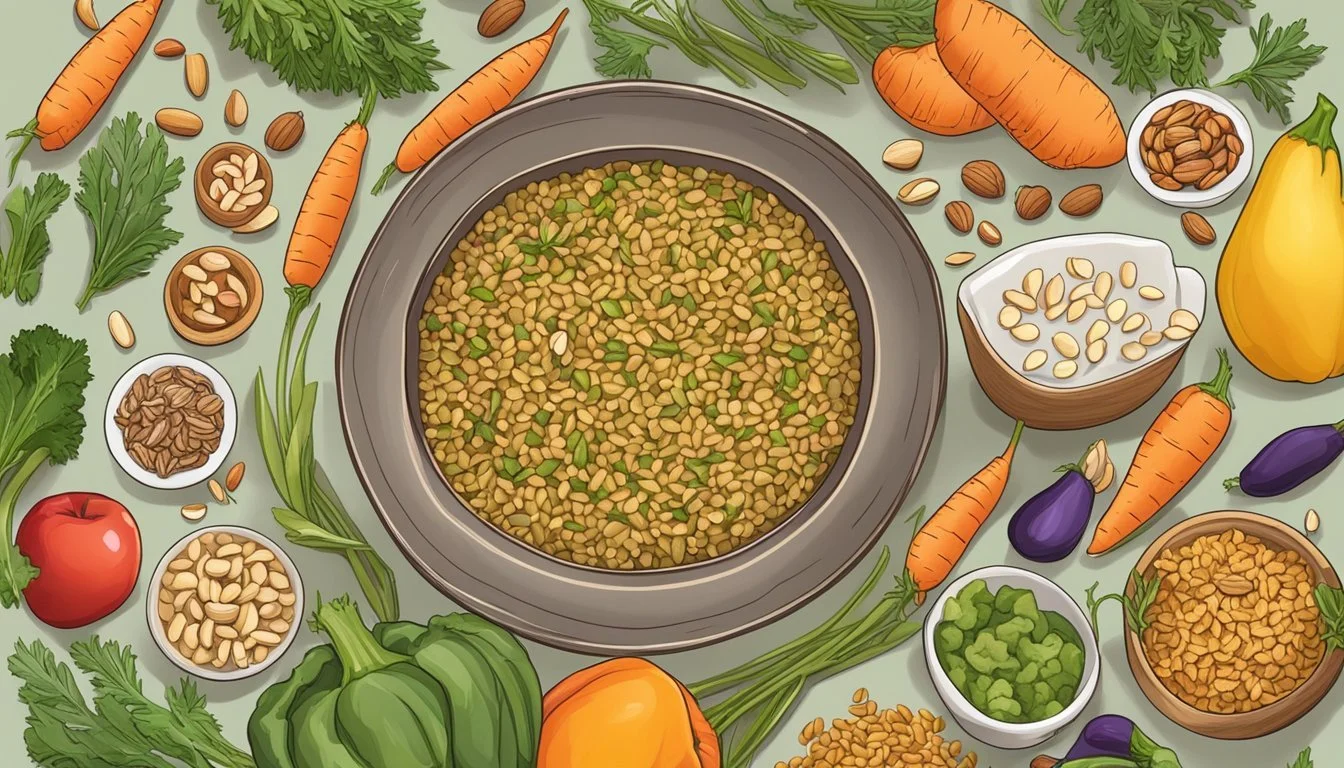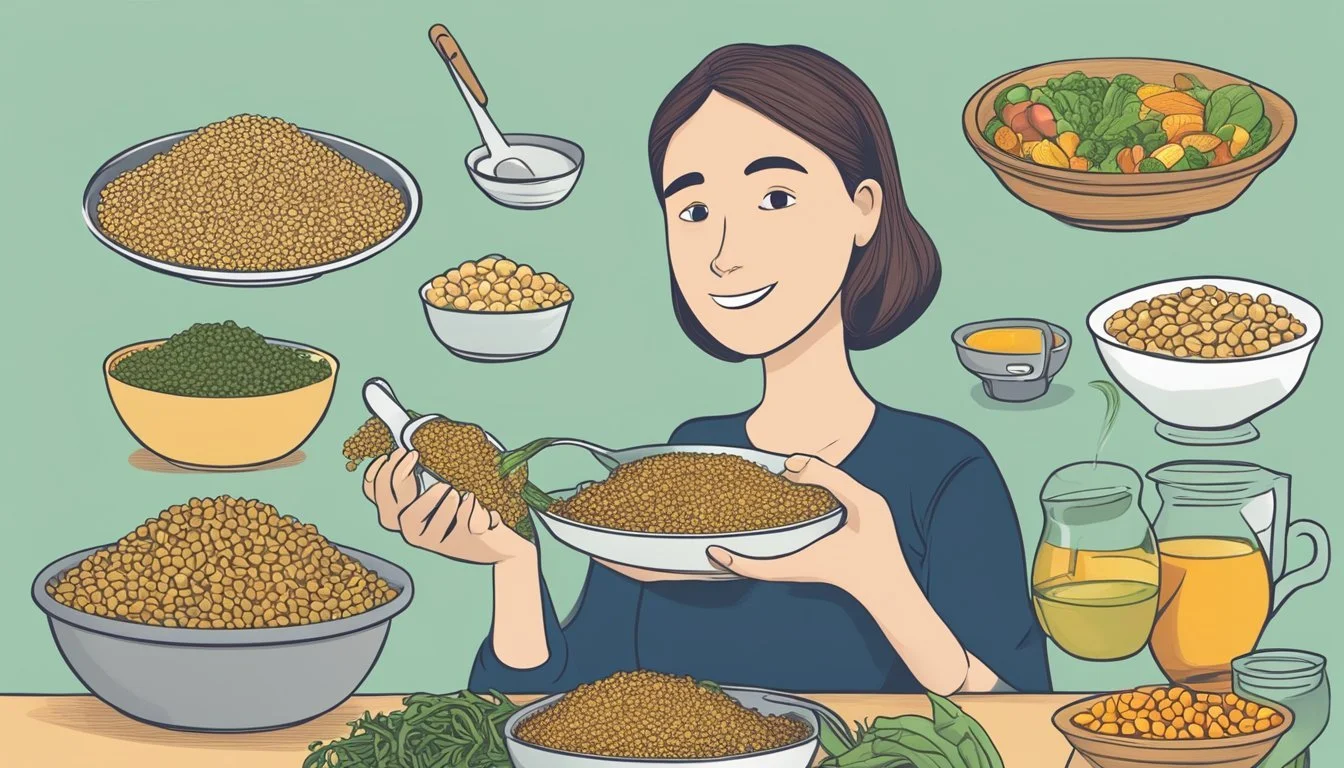Can Diabetics Eat Freekeh?
Health Insights and Nutritional Benefits
Freekeh, an ancient grain with roots in Middle Eastern cuisine, has piqued the interest of nutritionists and diabetics alike. Rich in protein and fiber, freekeh offers numerous health benefits, including supporting weight management and contributing to a balanced diet. For individuals with diabetes, freekeh is a viable option due to its relatively low glycemic index of 43, which helps in maintaining steady blood sugar levels.
The nutritional profile of freekeh makes it particularly appealing. It contains three times more fiber than brown rice and provides significant satiety, potentially aiding in weight control. The high fiber content helps in slower digestion, leading to gradual blood sugar release, an important factor for diabetes management.
Including freekeh in meals can be simple and varied, from adding it to salads to substituting it for other grains in your favorite recipes. Whether cooked on the stovetop or in a pressure cooker, freekeh retains its nutritional integrity while offering a versatile ingredient for diabetic-friendly dishes.
Understanding Freekeh
Freekeh is an ancient grain that has seen a resurgence due to its nutritional benefits and versatility in cooking. Derived from green durum wheat, it is celebrated for its high fiber and protein content.
Origins and Culinary Uses
Freekeh originates from the Middle East and has been a staple in diets for centuries. It is made by harvesting durum wheat while still young and green, then roasting and threshing it. This process imparts a unique, slightly smoky flavor.
In cooking, freekeh is versatile. Commonly used in salads, soups, and side dishes, it can be treated much like other grains such as rice or quinoa. Its hearty texture holds up well in robust recipes and pairs seamlessly with various vegetables, legumes, and spices.
Nutritional Profile
Freekeh boasts an impressive nutritional profile. It contains 15 grams of protein and 13 grams of fiber per 100 grams. These high levels make it particularly filling and beneficial for digestive health. Additionally, freekeh is rich in essential minerals like zinc, iron, and calcium.
This grain provides significant amounts of B vitamins such as niacin and vitamin B6, which are crucial for energy production and overall metabolic function. Freekeh also includes important antioxidants that aid in reducing inflammation and protecting cells from damage.
Nutrient Amount per 100g Protein 15 grams Fiber 13 grams Carbohydrates 60 grams Fat 2 grams Zinc 31 mg (207% DV) Iron High Calcium Present
Comparisons with Other Grains
When compared to other grains, freekeh stands out for its nutrient density. It has three times more fiber than brown rice, making it a superior option for those seeking to manage weight and improve digestion. Unlike bulgur wheat, which is also derived from durum wheat, freekeh is harvested while the grain is still immature, thus capturing a different nutrient profile.
Compared to quinoa, another popular ancient grain, freekeh is similar in protein content but generally higher in fiber. While both are gluten-free alternatives, freekeh, being made from wheat, is not suitable for those with gluten intolerance. It is critical to note this distinction for those with specific dietary needs.
Freekeh's Health Benefits
Freekeh offers various health benefits that are particularly beneficial for individuals managing diabetes. These benefits range from aiding weight management and improving digestive health to supporting blood sugar control and promoting heart and eye health.
Weight Management
Freekeh is high in fiber and protein, playing a significant role in feeling full after meals. Its fiber content is notably higher than many other grains. This satiety factor can help with weight loss or control, which is essential for managing Type 2 Diabetes.
Each 100 grams of freekeh contains:
Calories: 350
Fiber: 13 grams
Protein: 15 grams
Freekeh's low fat content also makes it a healthier option for those looking to control their calorie intake.
Digestive Health
Freekeh contains high levels of fiber, which supports digestive health by promoting regular bowel movements and preventing constipation. The fiber has a prebiotic effect, nourishing the beneficial bacteria in the gut.
Additionally, freekeh boasts important minerals like magnesium and iron, which contribute to overall gut health.
Freekeh's high fiber content:
13 grams of fiber per 100 grams
Enhances digestion and supports long-term prebiotic effects
Blood Sugar Control
Freekeh has a low glycemic index, making it a suitable food for people with diabetes. Foods with a low glycemic index release glucose slowly into the bloodstream, helping to maintain stable blood sugar levels.
The high fiber in freekeh further aids in managing blood glucose levels by slowing the rate of sugar absorption in the bloodstream.
Heart and Eye Health
Freekeh supports heart health due to its high fiber content, which helps lower cholesterol levels. This, in turn, contributes to better cardiovascular health and blood pressure management. Freekeh also contains antioxidants that reduce oxidative stress, a known risk factor for heart disease.
For eye health, freekeh provides lutein and zeaxanthin, antioxidants that protect the eyes from harmful light exposure and may help reduce the risk of macular degeneration.
Freekeh is a nutritious food that should be considered part of a diabetic-friendly diet due to its numerous health benefits, nutrient profile, and positive effects on weight, digestion, blood sugar, and overall well-being.
Diabetes and Diet
A well-balanced diet plays a crucial role in managing Type 2 Diabetes. By focusing on whole grains, complex carbs, and low glycemic index foods, individuals can help maintain stable blood sugar levels.
Managing Diabetes with Diet
For those managing Type 2 Diabetes, choosing the right foods can significantly affect blood sugar levels. An emphasis on whole grains like freekeh, which is high in protein and fiber, can aid in controlling these levels.
Freekeh is a complex carb that releases glucose slowly into the bloodstream, minimizing blood sugar spikes. Including foods with a low glycemic index, such as freekeh, helps maintain steady blood sugar.
The Role of Fiber in Diabetes Control
Soluble fiber is particularly important for diabetics, as it slows the absorption of sugar, aiding in better control of blood sugar levels. Freekeh contains a high amount of dietary fiber—13 grams per 100 grams—which can help in weight management and blood sugar regulation.
Consuming fiber-rich foods like freekeh can lead to a reduction in average A1C levels, which is a marker for long-term blood sugar control. This aligns with research showing that diets high in fiber contribute to lower inflammatory markers and improved overall health in diabetics.
Is Freekeh Suitable for Diabetics?
Freekeh can be a beneficial addition to the diet of someone managing diabetes. It's a whole grain that offers both nutritional value and potential blood sugar control properties.
Freekeh has a low glycemic index (GI), meaning it has a slower impact on blood sugar levels. This attribute makes it a preferred choice for diabetics compared to higher GI foods.
The high fiber content in freekeh aids in controlling blood sugar by slowing down the absorption of carbohydrates. This helps in preventing spikes in blood sugar levels after meals.
Rich in protein, freekeh offers an added benefit for diabetics who are looking for foods that can help with weight control. High-protein foods can promote satiety, reducing the likelihood of overeating.
Nutritional Benefits:
Fiber: Freekeh contains three times more fiber than brown rice.
Protein: Provides more satiety, aiding in weight management.
Low GI: Helps in better management of blood sugar levels.
This grain is also versatile in cooking, making it easy to incorporate into various meals. Whether added to salads, soups, or served as a side dish, freekeh's nutritional profile supports a balanced diet.
In conclusion, freekeh's low glycemic index, fiber content, and nutritional benefits make it a suitable and advantageous choice for individuals managing diabetes.
Preparing and Cooking Freekeh
Freekeh is a highly nutritious grain with a nutty and smoky flavor, making it an excellent addition to various dishes. Understanding how to prepare and cook freekeh, along with incorporating it into recipes suitable for a diabetic diet, is essential for making the most out of this ancient grain.
Basic Cooking Techniques
Cooking Freekeh:
Start by rinsing the freekeh grains thoroughly under cold water. Next, combine 1 cup (160 grams) of cracked freekeh with 2.5 cups (590 mL) of water or broth in a medium saucepan.
Bring the liquid to a boil over medium-high heat, then season with a pinch of kosher salt. Reduce the heat to low, cover, and simmer until the grains are tender. Cracked freekeh typically takes about 20 minutes to cook, whereas wholegrain freekeh will take 35 to 40 minutes. Drain any excess water before serving.
Freekeh in Recipes
Freekeh is incredibly versatile and can be used in a variety of recipes. It’s a great addition to salads, soups, and wraps due to its satisfying texture and nutty flavor.
For a hearty salad, mix cooked freekeh with chopped vegetables, a protein source like grilled chicken, and a light vinaigrette. In soups, add freekeh during the final 20 minutes of cooking for an added nutritional boost.
Freekeh can also be used as a base for grain bowls or as a stuffing for vegetables such as bell peppers or tomatoes, combining it with herbs, spices, and lean proteins.
Incorporating Freekeh in a Diabetic Diet
For people with diabetes, maintaining stable blood sugar levels is crucial. Freekeh’s high fiber content aids in blood sugar control and promotes satiety, which can help manage portion sizes and prevent overeating.
Incorporate freekeh into meals by pairing it with high-fiber vegetables and lean proteins. This combination helps slow the absorption of sugars, preventing spikes in blood sugar levels.
For instance, a meal might consist of a freekeh and vegetable stir-fry with a side of grilled fish, ensuring a balanced intake of carbohydrates, proteins, and fats. Monitoring portion sizes is also important; typically, a ½ cup serving of cooked freekeh is appropriate for maintaining good blood sugar levels.
Cautions for Diabetics Consuming Freekeh
Freekeh is a nutritious grain with various health benefits, but diabetics should consider some specific factors before including it in their diet. It's important to focus on gluten content and carbohydrate intake management.
Gluten Content and Sensitivity
Freekeh, as a type of wheat, contains gluten. This is crucial for diabetics who may also suffer from celiac disease or gluten sensitivity. Consuming gluten can trigger adverse reactions in these individuals, leading to digestive issues and nutrient absorption problems.
For those with both diabetes and celiac disease, it's essential to avoid freekeh to prevent complications. Gluten-free alternatives, such as quinoa or brown rice, can be safer options. Always read labels and opt for grains that are certified gluten-free if necessary.
Monitoring Carbohydrate Intake
Freekeh is relatively high in carbohydrates, which can impact blood sugar levels. Managing carbohydrate intake is vital for diabetics to maintain stable blood sugar. A typical serving of freekeh provides significant fiber, which can help moderate blood sugar spikes.
However, portion control is key. Diabetics should measure their freekeh servings carefully and incorporate it into a balanced meal plan. Pairing freekeh with protein and healthy fats can further aid in managing blood sugar responses effectively. Regular blood sugar monitoring is advised when introducing new foods like freekeh.
Shopping and Storage Tips
When buying and storing freekeh, finding the right type and ensuring its freshness is key for any diabetic looking to incorporate this healthy grain into their diet.
Finding Freekeh at the Store
Freekeh can often be found in the grains section of supermarkets and grocery stores, including those specializing in Middle Eastern foods. Look for cracked or whole grain freekeh options. The packaging should be intact and tightly sealed to maintain freshness. Freekeh is typically available in bulk bins or pre-packaged in bags or boxes.
To ensure you're buying fresh freekeh, check the expiration date on the package. If purchasing from bulk bins, make sure the store rotates their stock regularly for optimal freshness.
Storing Freekeh for Freshness
Once purchased, proper storage of freekeh extends its shelf life. Store it in an airtight container to prevent exposure to air and moisture. Place the container in a cool, dark pantry away from direct sunlight or heat sources.
For longer storage, consider refrigerating or freezing the grain. Refrigeration can extend its freshness up to six months, while freezing can keep it fresh for up to a year. Always label containers with the purchase date to monitor freshness over time.
Conclusion
Freekeh offers a nutritious option for individuals with diabetes. Its high fiber content can aid in controlling blood sugar levels by slowing glucose absorption.
Inclusion of freekeh in a diabetic-friendly diet can provide additional benefits:
Rich in Protein: Supports muscle maintenance and overall health.
High Fiber: Promotes satiety and supports weight control.
Low Glycemic Index: Leads to fewer blood sugar spikes.
When preparing freekeh, diabetics can mix it with vegetables, lean proteins, or legumes for a well-rounded meal. Consuming varied grains such as freekeh helps in maintaining a balanced diet.__
Freekeh, compared to other grains, can be a beneficial choice for diabetics. Its nutritional properties align well with the dietary needs of those managing diabetes._
Researchers and nutritionists suggest that incorporating whole grains like freekeh can contribute positively to healthful eating practices.
Example Preparation Methods:
Boiling: Add 3 cups of water to 1 cup of freekeh, simmer for 20-25 minutes.
Pressure Cooking: Use 1⅔ cups of liquid for every cup of freekeh, cook for 10 minutes on high pressure.
In summary, freekeh can be a good addition to a diabetes-friendly diet. Its balance of fiber, protein, and low glycemic index makes it a versatile and nutritious grain option for those looking to improve their dietary choices.








